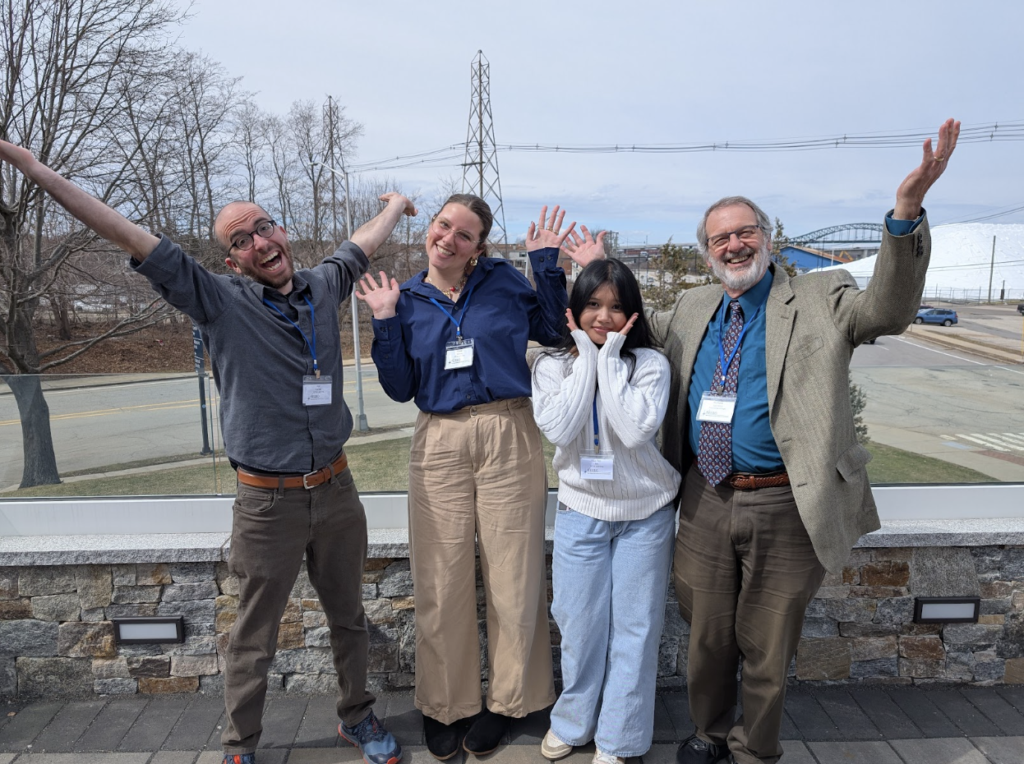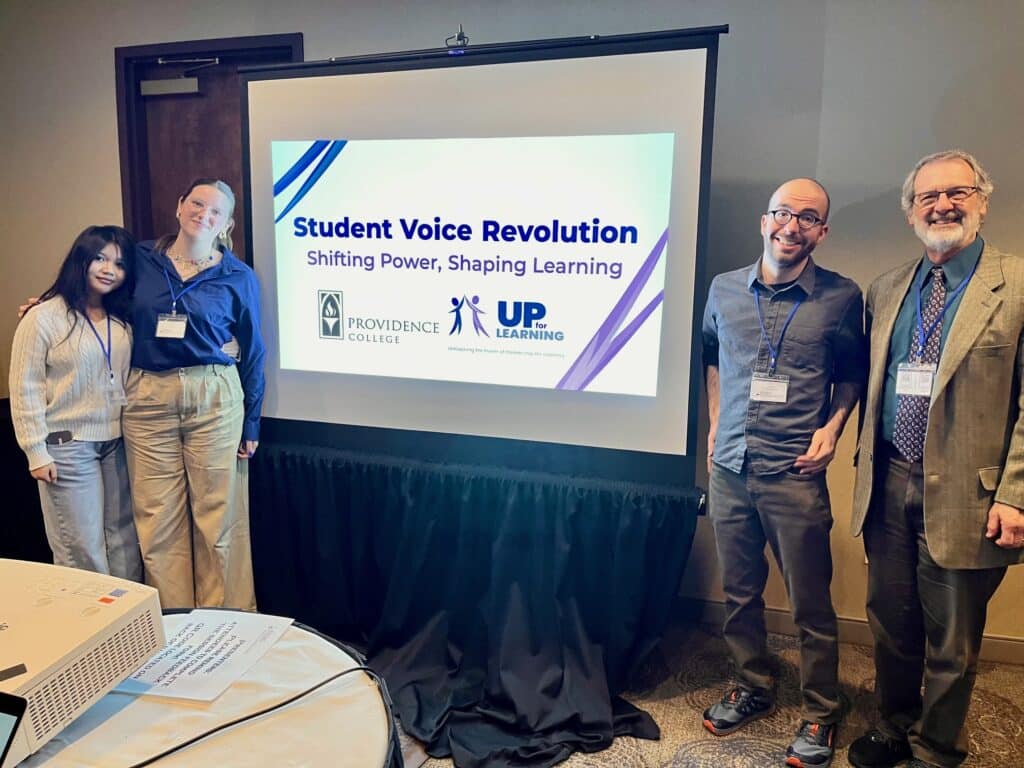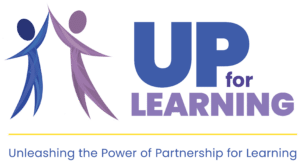 By Mavis Downey, UP Youth Intern
By Mavis Downey, UP Youth Intern
On March 26, in Portsmouth, New Hampshire, UP’s youth research team had the exciting opportunity to present our project, The Student Voice Revolution, share our process, and discuss our findings and recommendations at the New England Educational Research Organization (NEERO) conference. Our presenters included UPs Program Director Pat LaClair, Providence College Professor Rick Battistoni, youth researcher and UP Youth Program Specialist Mae Ree Jan, and myself, Mavis Downey, a youth researcher and UP Youth Intern.
Our journey began in March 2024 when our team was formed to explore how youth-adult partnerships influence young people’s sense of identity within their community and their ability to create change in their schools, workplaces, and society at large. This initiative emerged through a collaboration between UP for Learning and Professor Rick Battistoni, and was established as a Youth Participatory Action Research (YPAR) project.
We kicked off the project with bi-weekly meetings, starting with introductions and team-building activities, especially since we were working remotely. During our early discussions, we focused on reflecting on what matters most to us as youth. We explored questions like: When have we felt our voices were not being heard? What were those situations like? What common themes emerged from our experiences? These conversations led us to refine our research focus, which centered on adultism in education, student-teacher power dynamics, and student engagement.
From here, we developed several research questions that would guide our study:
How does student engagement change when students experience student-centered learning?
How does student voice in decision-making impact school culture?
What strategies can be used to dismantle adultist structures in education?
Next, we turned our attention to our methodology. We discussed the strengths and limitations of various research methods, such as interviews, surveys, focus groups, and participant observation. After careful consideration, we decided that focus groups would be the most effective approach. Our team then developed a script and protocol to guide student researchers in facilitating these groups at individual schools. Once we navigated the logistics of obtaining administrative approval and coordinating schedules, we were ready to begin the data collection phase.
With data in hand, we dove into analyzing the focus group transcriptions. We organized the data into two main categories: What are the benefits and barriers to student voice in learning? and What are the benefits and barriers to student voice in school decision-making? Some key findings of those categories included:
- Students said they are more motivated when they have a say in what and how they learn.
- Student voice in class can lead to trust and closer relationships between students and teachers (can also lead to exclusion of certain students).
- Aspects of students’ identities (e.g. grades, extracurriculars, race, gender) influence their sense of voice and their ability to be truly heard by adults.
- Students need to learn the skills and abilities that will allow them to drive their own learning and advocate for themselves. They need supports from teachers to make that happen.
- Students desire more voice in decisions that directly impact students (e.g., school cell phone policies).
- Student voice in most schools is heard but their ideas are not put into action.
Based on those findings, we developed a list of recommendations for students, teachers, and administrators, which we shared with participants at the NEERO conference. These recommendations ranged from asking teachers to examine their own biases about youth and for administrators to conduct school wide training for teachers to learn how to uplift student voices. The full list of recommendations can be found through this link.
This research team provided an incredible opportunity for youth like me, who had no prior research experience, to explore the field and have our voices heard. Even more rewarding was the fact that, as a team, we were able to conduct research and discover ways to amplify the voices of even more students.


